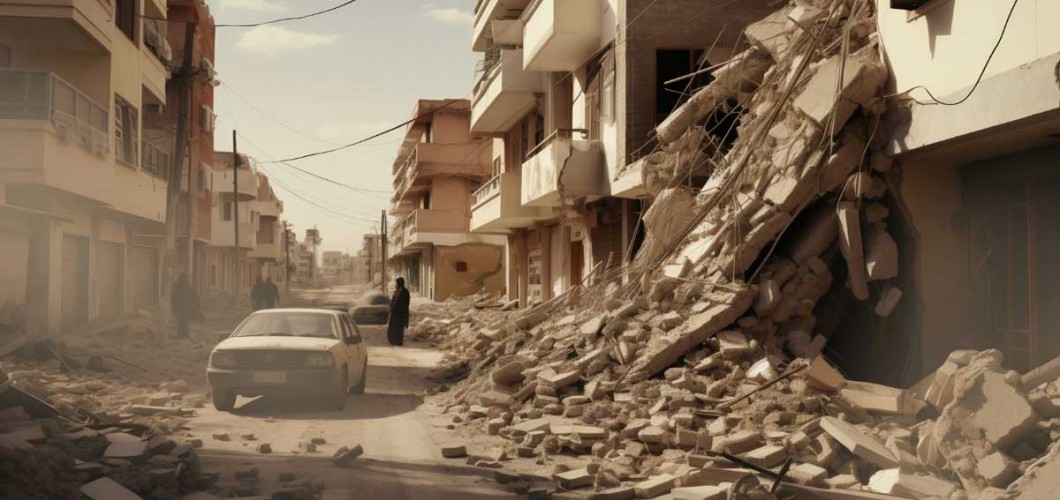
Natural Disasters and First Aid: What to Do After an Earthquake
Earthquakes are among the most destructive natural disasters, often causing significant loss of life and property. However, with the right interventions, survival chances can increase after an earthquake. Earthquakes occur suddenly, and this often leads to panic, with people not knowing what to do. In this article, we will discuss the importance of first aid after an earthquake, the steps that should be taken, and essential knowledge that can increase survival chances.
1. The Importance of First Aid After an Earthquake
Earthquakes often cause people to quickly leave their homes, workplaces, schools, or other places they consider safe. In such sudden events, professional medical help may not be immediately available. This is where first aid knowledge plays a crucial role in preventing severe injuries, saving lives, and stabilizing the situation. First aid after an earthquake is critical for providing quick assistance to victims and managing the situation until medical professionals arrive.
2. First Aid Stages After an Earthquake
a. Choosing a Safe Area and Personal Safety
The first thing you need to do after an earthquake is to find a safe area. Stay away from collapsed buildings, power lines, and other dangerous areas. If you are inside a building, immediately seek a safe space. Protect your head and avoid being near large furniture, windows, and other dangerous objects.
b. Calling Emergency Services
After witnessing an earthquake, immediately call the emergency services (112 or your local emergency number). Provide clear and concise information about the severity of the situation and the condition of the victims. Quick communication is necessary to ensure that help arrives as soon as possible.
c. Providing First Aid to the Injured
If there are injured people, providing first aid as soon as possible is essential. Stopping bleeding, stabilizing fractures, and performing CPR on unconscious individuals are fundamental first aid practices. Be careful when assisting the injured, as spinal injuries may be involved. Avoid moving the victim unless absolutely necessary.
d. Performing CPR and Artificial Respiration
If the victim is unconscious and not breathing, immediately start artificial respiration. CPR is a critical intervention for individuals experiencing respiratory failure after an earthquake. When performing CPR, place both of your palms on the victim's chest and apply pressure evenly.
e. Controlling Bleeding
If the victim is bleeding heavily, you need to stop the bleeding immediately using a clean cloth, gauze, or bandage, applying pressure. If the bleeding does not stop, continue to apply pressure to the wound area. Controlling bleeding is one of the most crucial interventions for increasing survival chances.
3. Special Conditions After an Earthquake
Sometimes, unusual situations can arise during or after an earthquake, which require careful first aid intervention.
a. Loss of Consciousness and Shock
Loss of consciousness is a common condition after earthquakes. Shock occurs when there is insufficient blood flow to organs, leading to the malfunction of vital systems. If someone is in shock, lay them down on their back and slightly lower their head to help blood flow to the brain. Stay calm and wait for professional help.
b. Burns and Explosions
Fires and explosions can occur after earthquakes, leading to severe burns. If someone has been burned, immediately rinse the affected area with cold water. However, avoid covering the burn area or applying excessive force. Professional medical assistance is always the best approach for treating burns.
c. Spinal and Neck Injuries
Spinal and neck injuries are serious conditions. If the victim is unconscious and there is a risk of spinal or neck injury, avoid moving them. It’s important not to worsen the injury. Try to keep the person stable and wait for professional help without moving them.
4. Being Prepared for First Aid After an Earthquake
Since earthquakes are unpredictable, it is crucial to always have a first aid kit on hand. Here are some basic items that should be included in a first aid kit for earthquake situations:
- Sterile bandages and gauze
- Antiseptic solutions and cleaning supplies
- Elastic bandages and wound covering materials
- Artificial respiration masks
- Cold compresses
- Basic medications (pain relievers, antihistamines)
- Gloves, masks, and protective gear
5. Conclusion: Survival and First Aid After an Earthquake
Earthquakes can be terrifying and destructive, but with the right first aid knowledge, lives can be saved. First aid interventions after an earthquake can increase the chances of survival and prevent serious injuries. Therefore, it is crucial for everyone to have basic first aid knowledge for earthquake situations. Remember, timely and correct intervention is one of the most important factors in increasing survival chances.

Leave a Comment